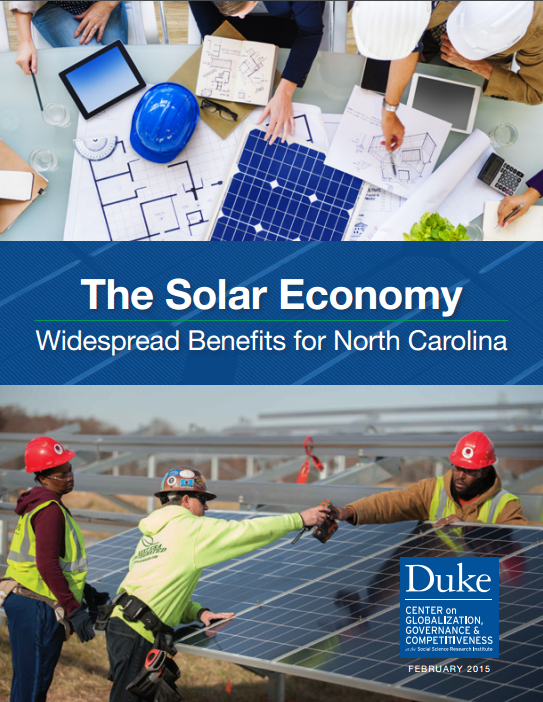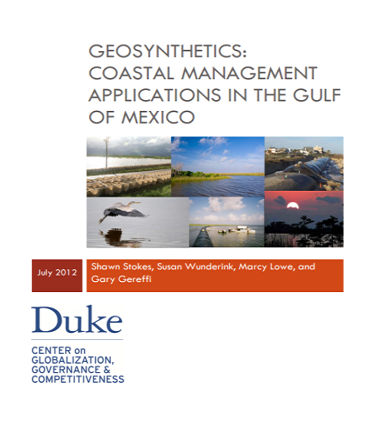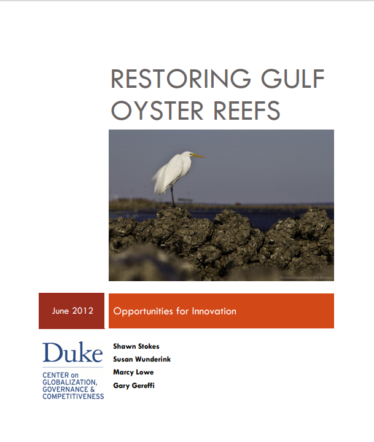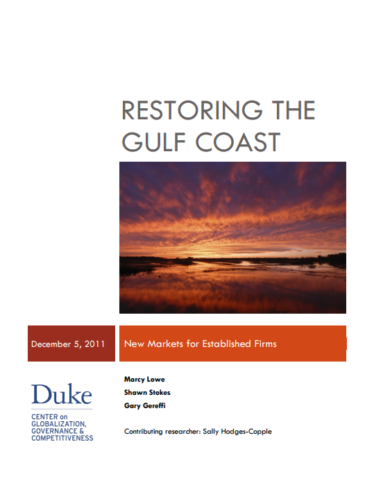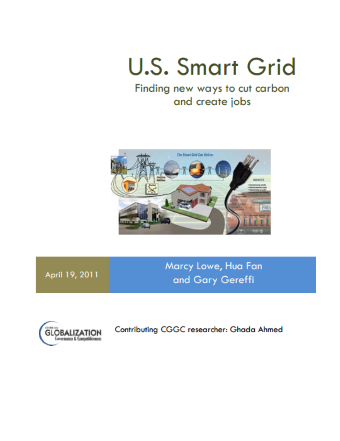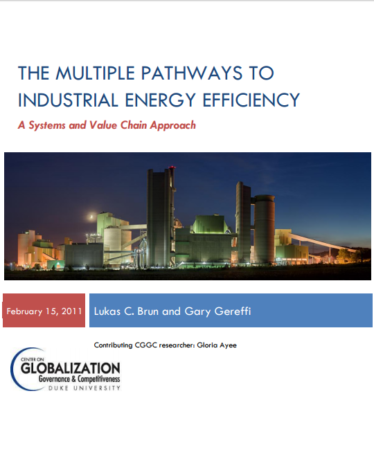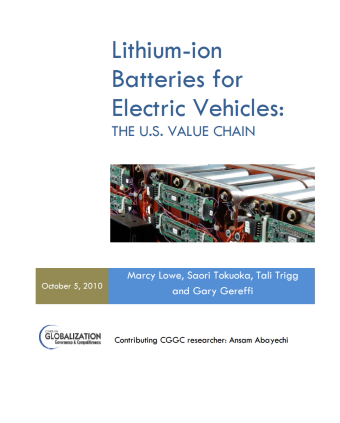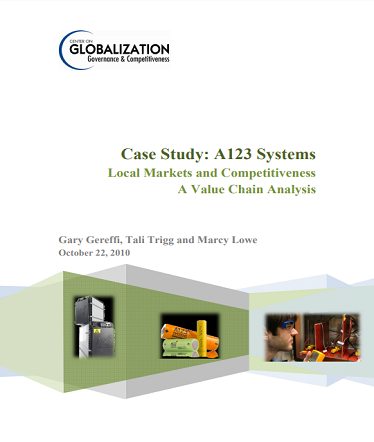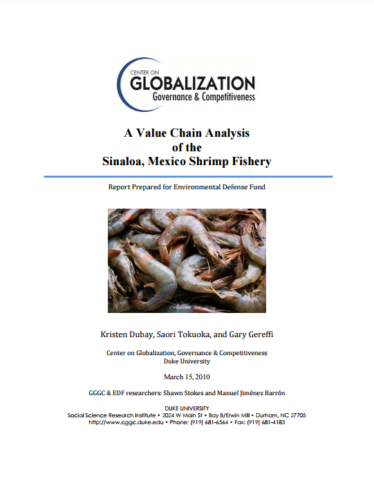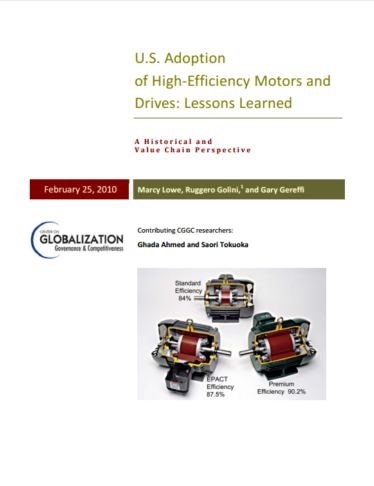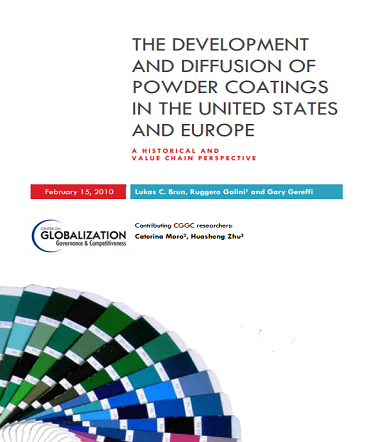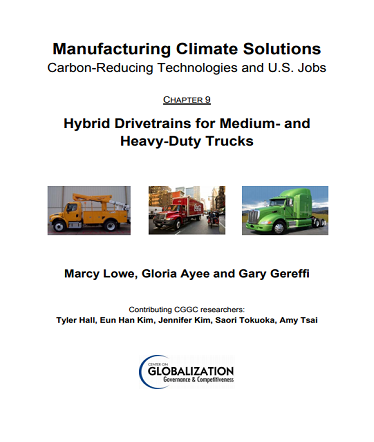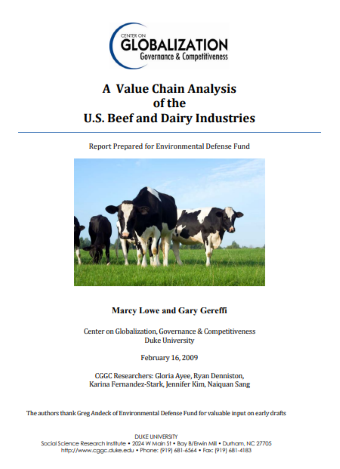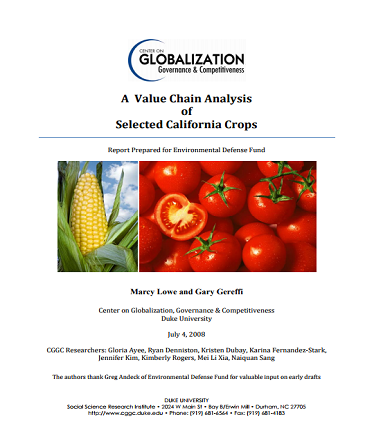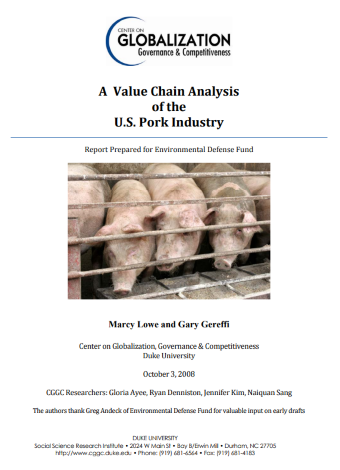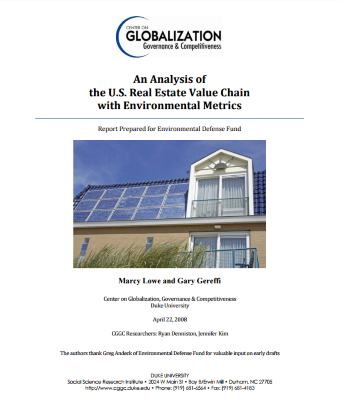The unifying theme of the Duke GVC Center’s work with the Environmental Defense Fund (EDF) was to use the value chain framework to study environmental issues; specifically to identify technologies that can minimize environmental impacts in diverse industries while also creating opportunities to generate U.S. employment. As part of this analysis, we seek to understand the roles of all the players in the value chain and to find leverage points where companies can be leaders in implementing environmental best practices.
Duke GVC Center’s relationship with EDF started with a series of four reports under EDF’s Corporate Partnerships Program (2008-2009). These reports analyze the structure and dynamics of four industries (beef and dairy, hog farming, California crops, and real estate) with the objective of identifying lead firms in each chain that could serve as leverage points for adopting environmental best practices. Two more reports within the Corporate Partnership Program on “China Hotspots” (2010) analyzed the development, diffusion, and adoption of two clean technologies in the United States (high-efficiency motors and industrial powder coatings), to identify the actors and factors needed to facilitate their adoption in other countries, particularly China. The reports describe the major advances for each technology, how the industry is organized, and the role of regulations and industry associations in promoting each technology.
In the Manufacturing Climate Solutions (2008-2009) series, value chain analysis is used to shed light on U.S. “green job” opportunities linked to carbon-reducing technologies in 12 industries. Each of the 12 reports look at the linkages between low-carbon technologies and U.S. job creation, including labor and skill requirements. The initial report (Chapters 1-5) was released in November 2008 and looked at five technologies. In 2009, an additional seven reports were produced (Chapters 6-12) on technologies ranging from electric heat pump water heaters to public transit buses.
In the Gulf Coast Restoration (2011-2012) report series, the Duke GVC Center produced three reports on behalf of EDF that analyzed the value chain of firms capable of restoring coastal wetlands in the Mississippi River Delta, an area under threat from human-induced damage and natural disasters. The reports address the question, “If restoration were to occur on the scale needed, what kinds of jobs would be created, and where?”
In 2010-2011, the Center produced four reports and two firm case studies for EDF. The four reports were on lithium-ion batteries for electric vehicles, the shrimp fishery industry in Sinaloa, Mexico, the U.S. smart grid, and opportunities to enhance industrial energy efficiency. The most recent project (2015) focused on identifying actors and opportunities for the solar energy value chain in North Carolina.
